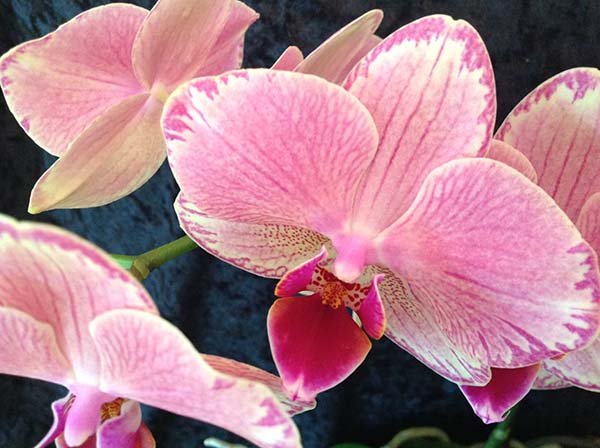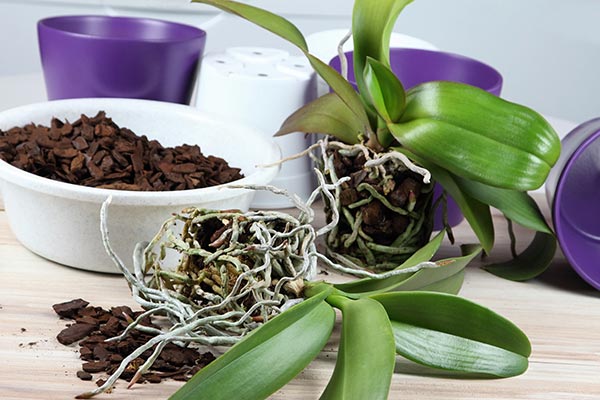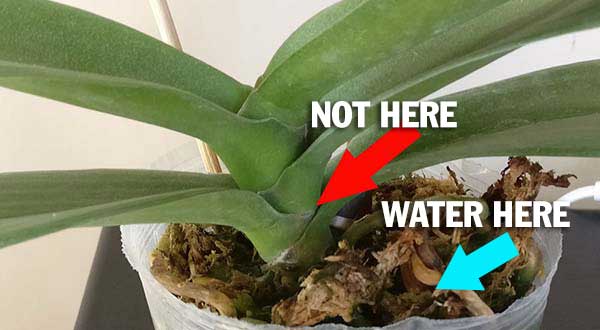By Sue Hynes

If you had a chance to stop by the Maine Orchid Society (MOS) table at the Maine Flower Show held on March 31-April 2, you might have noticed quite a gathering around the MOS display.
Our display of Phalaenopsis Orchids and a large Cymbidium Orchid attracted a lot of attention from plant-loving attendees. By far, the #1 most frequently asked question was: Why won’t my Phalaenopsis orchid bloom again?
Orchids Need to be Repotted At Least Every 2 Years

By asking a couple quick questions, we quickly discovered that most new orchid owners had never repotted their plant. After a year or two, orchid medium starts to break down. It also builds up salt and minerals. Old medium and salt build-up can be the death of your orchid. In another post, I will explain how best to repot your Phalaenopsis Orchid. But if you can’t wait, check out YouTube. There are some good videos there on repotting Phalaenopsis orchids.
Never Use Ice Cubes to Water your Orchid
 Another fact we discovered is that many new orchid owners are watering their orchid by placing ice cubes on top of the roots. Orchids aren’t happy when they are shocked by freezing cold water. We know that many orchids come with instructions to water them with an ice cube. This is bad advice and probably comes from massive orchid growers who want you to kill your orchid and buy another one.
Another fact we discovered is that many new orchid owners are watering their orchid by placing ice cubes on top of the roots. Orchids aren’t happy when they are shocked by freezing cold water. We know that many orchids come with instructions to water them with an ice cube. This is bad advice and probably comes from massive orchid growers who want you to kill your orchid and buy another one.
Don’t Over-water Your Orchid
Whether your orchid came planted in a moss or bark medium, you need to wait until that medium is dry before you water again. In nature, Phalaenopsis orchids grow on trees. Their roots are wrapped around branches, exposed to air movement and allowed to dry out after rainfall.
A great way to tell if your orchid is ready to be watered is to have a plant tag or bamboo skewer stuck inside the plant’s pot. If you pull out the tag, touch it to your wrist and it is still damp, don’t water yet.

Water your orchid with luke-warm water. Take your orchid to the sink; run water over the top of the soil and give it a good soaking. Let the excess water run out the bottom of the pot. When it stops dripping, you’re done watering. One warning – try not to get water on the tops of the leaves. Water can pool at the crown and cause crown rot. If you get water in the crown by mistake, tip your orchid on its side and let the water run out of the crown.

There were many more excellent questions, and we’ll try to include more questions and answers in future posts.
Sue Hynes has been a member of the Maine Orchid Society for 2 years.
